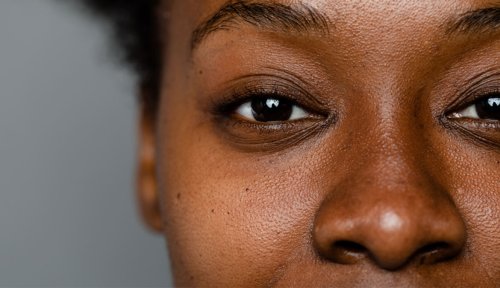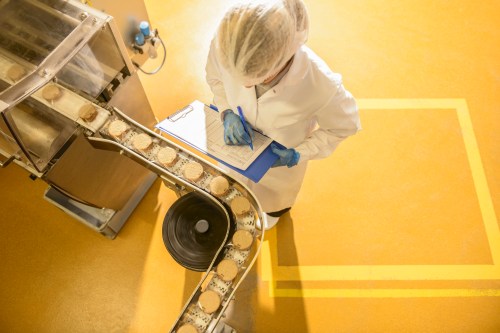I thought acne was something that I’d outgrow, like knowing all the lyrics to Evanescence’s first album or a tendency to succumb to ennui. But many years later, all of those things are still here—and at least one can be explained. You can get acne at any age, and it’sone of the most common skin conditions in America. This is all to say I’ve had enough experience with breakouts that I know what to do when a pimple pops up (yay?), but there’s one kind of pimple that still baffles me—the pimple inside the nose.
Experts in This Article
board-certified dermatologist at the Skin Institute of New York
board-certified dermatologist based in Florida
board-certified dermatologist at Dermatology Physicians of Connecticut and associate clinical professor in dermatology at Yale School of Medicine
board-certified dermatologist practicing both medical and cosmetic dermatology
Face and body breakouts can occur due to various factors, including hormones, stress, and not washing your face before you go to bed. If you’re wondering, “Why do I have a pimple inside my nose?” the cause is completely different, explains Jeffrey Fromowitz, MD, a Florida-based board-certified dermatologist. Keep reading for everything you need to know about what’s behind those painful pimples inside your nose and how to treat them.
What causes pimples inside the nose?
While bacteria is just one of the causes of breakouts on your face, it’s the number one culprit for nose pimples. “These are typically from bacteria that colonize the nostrils and, in many cases, can be caused by staphylococcus aureus,” says Dr. Fromowitz. This bacteria often gets into your nose from nose-picking with dirty hands or grooming with dirty tweezers or clippers.
If you’re familiar with different types of acne, you may know that bacteria causes certain types of pimples (and if not, here’s a refresher on the different types of acne to get you up to speed). This means that the pimples that show up inside your nose are more likely to be a pustule or a cyst—which are directly linked to bacteria—than a whitehead or blackhead. While nose pimples aren’t as visibly noticeable as, say, a pimple on your forehead, they can be far more painful. Dr. Gohara says that’s because the inside of the nose has “more nerve endings and more sensitive skin.” Plus, since these bumps are often caused by infection, they tend to be more tender.
How to tell if something inside your nose is a pimple (versus something else)?
Though nose pimples are slightly different than the types of zits you get on your skin, they generally look the same. They can be red, yellow, or white and are generally filled with pus. “Any bump in the nose can be painful, but usually with a pimple, you will most likely see pus develop at some point,” says Dr. Karp. If you’re dealing with something that sounds nothing like this, chances are it’s probably not a pimple at all. “A bump in the nose can be a pimple or another kind of skin infection. I have seen people develop warts, nasal polyps, and cold sores in the nose,” she says.
Understandably, you’ll want to know exactly what you’re dealing with before starting any treatment. Use a small mirror to get as close a look as possible at the bump, and if it seems different than what you’d expect from a pimple (like if there’s no pus at all or it isn’t coming to a head), you’ll want to speak to your Dr. about how best to move forward. A nasal polyp, for example, can be treated with medication.
How to get rid of a pimple inside your nose the right way
1. Use a warm compress
The only thing you can do at home to get rid of a pimple in your nose is to apply a warm compress. “Take a clean washcloth and get the tap running till it’s fairly warm but not scalding hot; wet the cloth and ring that out so it’s not dripping. Then, apply that using a finger right over the area.” Hold it on with gentle, light pressure for five minutes a few times a day until the pimple is gone, which Dr. Kwan says can take up to two weeks.
This Parisian Skincare Brand Is Launching in the United States for the First Time—Here’s What a Derm Wants You to Know

We’re Calling It: Cleansing Balms Are the Face Wash of the Future—Here Are 3 to Add to Your Cart

This Is the One Product That Scarlett Johansson Always Keeps in Her Purse and on Her Bedside Table

2. Resist the urge to pop it
When you have a particularly painful pimple, your first instinct might be to pop it and get rid of it. But Dr. Kwan says that’s a bad idea.“One of three things can happen when you squeeze it,” says Dr. Kwan. “One, all the contents can come out, which is what people want. But, oftentimes, if it’s not coming out and people are putting pressure, you could actually explode that pimple under the skin. And then the third thing that could happen is some come out, and some explode under the skin.” When the pimple explodes under the skin it leads to increased inflammation, the potential spread of bacteria, and a prolonged healing process.
3. Don’t apply regular acne products
While solutions like pimple patches and salicylic acid serums are a great quick fix for pimples everywhere else, they’re a big no-no inside the nose. “You don’t want to put irritating things up inside the nostril,” says Dr. Kwan. And because the nostril is so sensitive, acne products you don’t usually find irritating on your face can do damage inside the nose.
“The inside of the nose is mucosa,” says Dr. Kwan. “It’s much more delicate—it’s like the inside of your mouth to a certain extent, whereas the skin’s surface is slightly more durable. If you put something that you would normally put on the surface of the skin to treat a pimple inside the nostrils, it can potentially get very irritated.And if you put something up in the nose, you’re probably going to be in inhaling some of the particulate matter as well. So I wouldn’t recommend putting any over-the-counter-acne medications or products inside the nostril.”
4. Avoid topical antibiotics unless your doctor prescribes them
Even antibacterial ointments that seem harmless aren’t a good idea. “Most topicals are an ointment that’s occlusive, and it’s not going to help the pimple inside the nose,” says Dr. Kwan. “The things that would help it are not appropriate to put inside the nostril—like benzoyl peroxide. If they have a prescription topical antibiotic like clindamycin in a solution, that might be okay.But anything over the counter like Neosporin, any triple antibiotic ointment, then Polysporin, I don’t think you’re gonnareally do much.”
When to see a doctor for a pimple inside your nose
According to Dr. Karp, most nose pimples should heal within a week. If it’s been four weeks and it’s not improving, Dr. Kwan recommends heading to the dermatologist. “Sometimes we can inject it with a little bit of steroid to try to flatten it out. Although, again, it is uncomfortable to have the nostril injected,” he says. And since bacterial infections inside the nose can be commonly mistaken for a run-of-the-mill pimple, Dr. Gohara says going to your dermatologist can rule out an infection.
How to prevent nose pimples
The key to preventing a pimple in the nose is to keep your nostrils clean—and that doesn’t mean picking out the boogers. Generally speaking, keep out of your nostrils. If you need to get in there, make sure your hands or whatever tools you’re using are clean. That means washing your hands before you blow or pick and disinfecting tweezers and nose-hair-trimmers before you use them. But because hair removal can irritate the nostril and lead to pimples like ingrown hairs, it’s probably best to avoid hair removal to begin with. If you aren’t introducing bacteria to the area, you have a smaller chance of developing a nasal pimple.
Final takeaway
Nose pimples can be annoying (and painful), but with a few easy steps, you can treat them (and possibly prevent them from happening in the future). Like with any breakout, you should resist the urge to pop a nose pimple and try treating it with a warm compress first (and practicing patience). If your pimple doesn’t let up in a few days (or if it worsens), you should call your dermatologist, who can help. To prevent pimples from forming inside your nose, keep your hands (and any tools going in or near your nose like tweezers, trimmers, etc.) clean to minimize the spreading of bacteria and germs.
Sign Up for Our Daily Newsletter
Get all the latest in wellness, trends, food, fitness, beauty, and more delivered right to your inbox.
Got it, you've been added to our email list.







